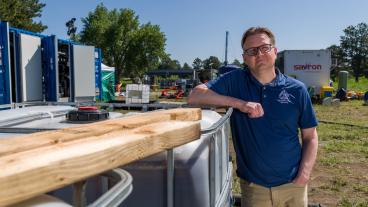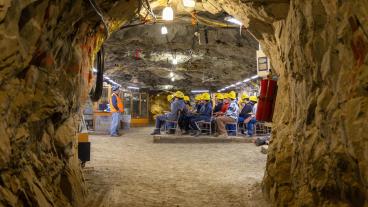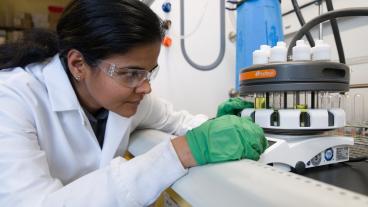Mechanical engineering professor Ozkan Celik and two Mines students have designed a robotic exoskeleton, named the Wrist Gimbal, which would assist stroke patients to complete repetitive movement therapy tasks. Based on a previous model Celik designed, this new robotic device focuses on two rotational degrees of freedom and would cost less than $5,000.
Robots have degrees of freedom, otherwise known as joints that enable their movements. Each revolute joint creates one rotational degree of freedom. As the team decreased the degrees of freedom from three to two in the new device, they used more balanced and robust materials and created an improved intuitive visual interface.
“The degree of freedom we eliminated was wrist abduction and adduction—which has the smallest range of motion among the three,” Celik said. “Also, exercising wrist flexion and extension can be expected to benefit abduction and adduction as some muscles are involved in both movements.”
Since wheelchairs are not uncommon for stroke patients, the team developed a robotic exoskeleton that a stroke patient could be strapped into while seated. Patients would hold onto the device and use wrist movements to complete assessment exercises that would determine their maximum range of motion. The robot applies force to aid or deter movements, and records responses in particular tasks.
“The device provides motivation,” Celik said. “Our game-like interface exerts assistive forces to stimulate patients and prompt them to complete exercises with assistance.”
Senior mechanical engineering student and president of Robotics Club David Long worked on the mechanical design and 3D printed, machined and laser cut several of the parts of the device and specialized in the robot’s control system.
“Feedback control is one of those classes I took last semester that I didn’t think I was going to use much. Then suddenly, that’s all I did all summer and it was great because when you see something theoretical like that and apply it in practice, it really gives you a lot of faith in course work,” Long said. “I am going to be using it for a long time.”
Graduate mechanical engineering student Hossein Saadatzi is currently working on the kinematics and dynamics of the device and developing an active gravity compensation method that would allow the robot to provide more accurate force feedback.
“In my graduate study, I wanted to improve my skills in practical and experimental work,” Saadatzi said. “I chose biomechatronics because I can apply my knowledge to help patients get better.”
Contact:
Kathleen Morton, Communications Coordinator / 303-273-3088 / kmorton@mines.edu
Karen Gilbert, Director of Public Relations / 303-273-3541 / kgilbert@mines.edu



